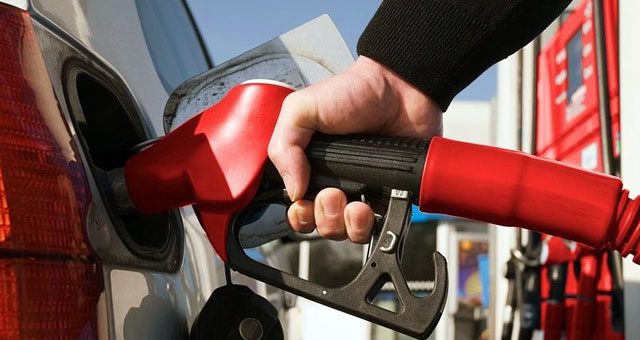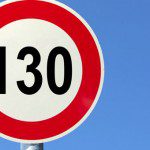
it wiAs the cost of fuel has increased, more and more drivers are looking at ways of cutting the costs of their everyday motoring and how to save fuel driving – even with their holiday hire car. Here we will explore a few ways you can keep fuel costs down by making your car a little more efficient and also increase your fuel efficiency by making small changes to your driving style
Table of Contents
Basic fuel saving
We wil learn about driving thinking on saving fuel, but first we should take into consideration some basic fuel saving tips in our vehicle. Some of our recommendations may be related to when you visit Malaga.
Air conditioning
Powering the air conditioning is an extra burden for a car’s engine, effecting both fuel economy and engine performance. In the middle of a Malaga summer a cool, air conditioned vehicle can be a refuge from the heat, but if you can avoid switching it on, especially out of peak summer, early mornings and during the evening, some sources claim you can save up to 3% of fuel by keeping the air-con switched off. If you’re really uncomfortable you should only open windows and air vents when stationary or moving slowly.
Sometimes opening the window is enough to refresh the interior of the vehicle.
Close the windows
We’re not saying you should be wilting at the wheel, but the aerodynamic drag of an open window or sunroof on a car travelling above 80km/h can add to your fuel usage, as more energy (and therefore fuel) is required to keep your speed up. You can improve fuel economy by simply keeping your windows closed at higher speeds, and only opening them when still or moving slowly.
Lighten your load
Low cost airlines are not the only place where packing too much can cost you more than anticipated! Carrying extra weight in your hire car means it will need more energy to mov – resulting in higher fuel consumption. For every extra 50kg in the car (think two suitcases and a hand-luggage bag) your fuel consumption can increase by almost 2%, so theoretically, your journeys from the Malagacar office to your accommodation and back should be your most inefficient drives. If you’re out and about, travel light and you could save a little more on your fuel costs.
Car Maintenance
When at home, most of us keep our cars well-maintained with regular servicing to keep it operating at peak efficiency. Dirty spark plugs and air filters, clogged fuel filters and dirty motor oil will all affect your fuel economy, with a well maintained engine saving up to 4%. Here at Malagacar.com, we have our own maintenance team who ensures each vehicle in our fleet meets our high standards for reliability, safety and security. You can drive your car away from our office safe in the knowledge that your holiday car rental has been fully checked and inspected to meet our stringent controls, and that we’ve already done our bit in terms of maintenance to ensure your car is as efficient as it can be.
Tips to save fuel driving

Not so long ago, one of the many advantages to hiring a car at Malaga airport for your holiday was that fuel was relatively cheap. These days, however, the price per litre of fuel is not that much different to the price in the UK so if you’re planning on doing a lot of driving, this can eat into a sizeable chunk of your holiday spending money.
If you’re on a budget but planning to put in some miles on your next Malaga holiday, you may want to consider some of our fuel efficient driving tips to help keep your costs down. Here’s part one of two posts to help you squeeze every last drop out of your tank…
Drive smoothly
Not always easy when you’re abroad, but if you’re familiar with the roads you’re driving on, you can anticipate the road ahead to avoid unnecessary braking and accelerating. Plan your journey in advance via a map or GPS so you have an idea when to expect turnings or junctions. When you need to slow down, decelerate gradually and early. Some sources claim that aggressive driving and heavy breaking can use up to 20% more fuel than a smoother approach.
Switch off the engine
When driving on many rural roads, you may still find yourself at the mercy of a farmer and his animals or some other obstruction. If you do find yourself stationary for more than a minute or two, and it’s safe to do so, turn off the engine. Most modern cars use practically no extra fuel when they’re re-started without pressing the accelerator, so you won’t waste fuel turning the car back on.
Use a higher gear as soon as possible
Cars are designed to start in the lowest gear possible to make the most power available to get the car moving. But cruising along in low gears increases your fuel consumption, so once you’re at speed, driving in highest gear possible can improve your fuel economy. When it’s safe to do so, always try to change up to a higher gear.
Slow down
Always good advice on busy roads, but avoid excessive speed wherever you can as it’s one of the easiest and most efficient ways to save fuel. As the speed of the car increases, so does the amount of fuel used. For example, an increase of speed from 40km/h to 80km/h almost doubles fuel consumption. That said, driving too slowly can increase consumption too. A number of manufacturers claim optimum fuel economy occurs between 50km/h and 70km/h so try to keep that your cruising speed.
Do you have any fuel efficient driving tips you’d like to share? Please feel free to comment below.
How accurate is the average consumption indicated by the on-board computer?
As we have just received a comment from a customer about his experience with the on-board computer of a Seat Leon for rental. We take this opportunity to talk about this topic: How accurate is the average consumption of the on-board computer of my car?
Is it true that on-board computers are imprecise in instant consumption, average consumption or autonomy we have left?
Today, technology is often very present in cars; it basically has two functions: Improve driving safety and driving ease. To that end, many cars equipped an on-board computer which reports a number of parameters.
 Regarding the instantaneous consumption, this is a guideline that will give you a rough idea and serves to compare the car in different situations. So the indicator will give different values depending on whether you’re on the highway or city, in which gear you are, if you step on the throttle, if the engine is cold, the use of air conditioning or driving with the windows open for example.
Regarding the instantaneous consumption, this is a guideline that will give you a rough idea and serves to compare the car in different situations. So the indicator will give different values depending on whether you’re on the highway or city, in which gear you are, if you step on the throttle, if the engine is cold, the use of air conditioning or driving with the windows open for example.
The average consumption takes into account other factors, such as fuel left in the tank and the average speed recorded by the computer.
The fuel level indicator is showing you the relative amount of fuel remaining in the tank in relation to a full tank. This amount may also vary according to whether you drive through hills, curves, etc. So if you want to know the actual level of fuel in your car, better check while the vehicle is parked with the engine running.









;) Top 20 Frequently Asked Questions about car hire at Malaga Airport
Top 20 Frequently Asked Questions about car hire at Malaga Airport;) Common fines of Malagacar.com customers
Common fines of Malagacar.com customers;) Liquefied Petroleum Gas (LPG / GLP) or Autogas in Malaga
Liquefied Petroleum Gas (LPG / GLP) or Autogas in Malaga